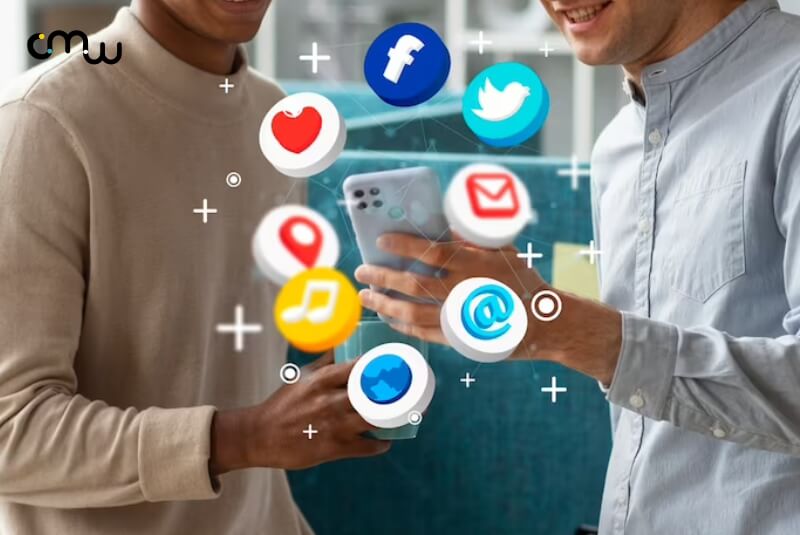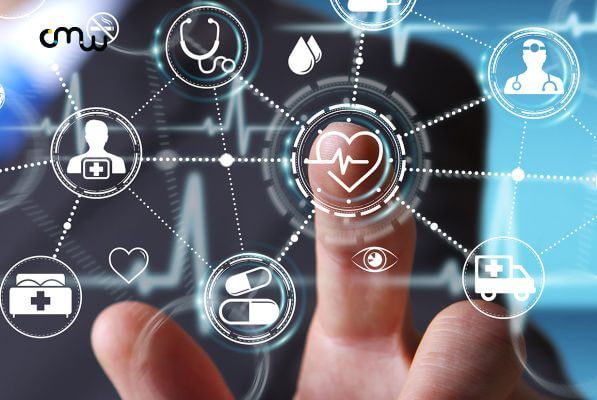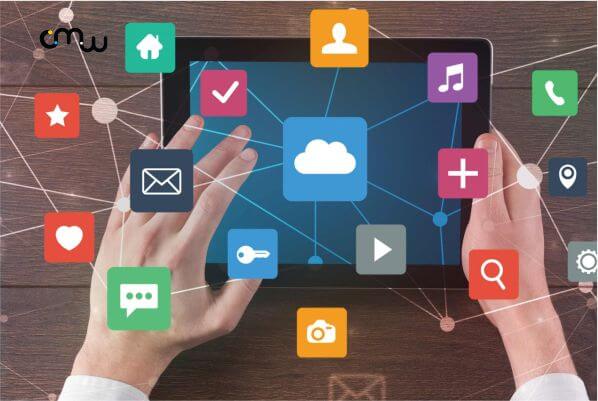Healthcare marketing has become increasingly important in recent years as the healthcare industry continues to grow and become more competitive. With the advent of new technologies, such as social media and virtual reality, healthcare marketing has evolved to become more innovative and personalized. This article will explore the intersection of technology and branding in healthcare marketing and how these innovative approaches are changing the way that healthcare organizations engage with patients and consumers.
Leveraging Social Media
In today's digital age, social media has become an essential tool for healthcare marketers to connect with patients and build their brands. With millions of users active on social media platforms, these channels offer an unprecedented opportunity to reach a broad and diverse audience. Social media allows healthcare marketers to communicate their message to a wide range of people and engage with them in a meaningful way. By leveraging social media platforms like Facebook, Twitter, Instagram, and LinkedIn, healthcare organizations can build their brand and connect with patients in new and innovative ways.
To leverage social media effectively, healthcare organizations should consider developing a social media strategy that aligns with their overall marketing goals. The strategy should define the target audience, the types of content to be shared, and the metrics to be used to measure success. Healthcare organizations can use social media to share educational content, promote services and products, and engage with patients in a two-way conversation. By using social media analytics tools, healthcare marketers can track the performance of their social media campaigns and adjust their strategy as needed.
One example of a successful healthcare social media campaign is the "Share the Journey" campaign by Cancer Research UK. This campaign encouraged cancer patients and survivors to share their stories and experiences on social media using the hashtag #sharethejourney. The campaign was a huge success, with thousands of people sharing their stories and raising awareness about cancer. By leveraging the power of social media, Cancer Research UK was able to reach a broad audience and engage with them in a meaningful way.
Social media has become an essential tool for healthcare marketers to connect with patients and build their brands. Healthcare organizations that leverage social media effectively can engage with patients in a meaningful way and build a solid online presence. By developing a social media strategy that aligns with their overall marketing goals, healthcare organizations can use social media to share educational content, promote services and products, and engage patients in a two-way conversation.
Influencer Marketing
Influencer marketing has become an increasingly important aspect of healthcare marketing in recent years. Influencers are individuals who have a large social media following and the ability to influence their followers' purchasing decisions. In the healthcare industry, influencers can be doctors, nurses, or other healthcare professionals who have a significant online presence.
Influencer marketing in healthcare can be a controversial topic due to concerns about conflicts of interest and the potential for influencers to promote products or services that may not be in the best interest of patients. However, when done ethically and transparently, influencer marketing can be an effective way for healthcare organizations to connect with patients and build their brands.
One successful example of influencer marketing in healthcare is the partnership between Pfizer and lifestyle influencer @fittybritttty. The influencer shared her personal experience with Pfizer's COVID-19 vaccine on social media, including the benefits of getting vaccinated and the side effects she experienced. This campaign helped Pfizer reach a broader audience and build trust with patients who may have been hesitant to get vaccinated.
Another successful healthcare influencer marketing campaign was done by Hims, a men's wellness company. They partnered with comedian John Mulaney to create a humorous video series about men's health issues, including hair loss and erectile dysfunction. The campaign was widely shared on social media and helped Hims reach a younger male demographic.
Overall, influencer marketing can be a powerful tool for healthcare organizations looking to build their brand and connect with patients. However, it is essential to ensure that any partnerships are transparent and align with the organization's values and mission.
Virtual Reality and Augmented Reality
Virtual Reality and Augmented Reality (VR/AR) are two technologies that are transforming the healthcare industry. In healthcare marketing, these technologies have the potential to provide patients with a unique and immersive experience that can help them better understand their condition and treatment options. VR/AR technology can be used in healthcare marketing to showcase medical facilities, treatment options, and procedures. For example, a hospital can use VR/AR to provide a virtual tour of the facility, allowing patients to see what it's like to receive care there. Additionally, VR/AR can be used to create educational content about specific medical conditions or procedures. These interactive and engaging experiences can help patients better understand complex medical information. Examples of successful VR/AR campaigns in healthcare marketing include Pfizer's use of VR to educate patients about breast cancer and AccuVein's use of AR to help nurses locate veins for IV insertions. Overall, the benefits of using VR/AR in healthcare marketing include improved patient education and engagement, increased brand awareness, and a unique way to stand out in a crowded market.

Mobile Apps
Mobile apps have become a ubiquitous part of our daily lives, and healthcare marketing is no exception. Mobile apps can be used to promote healthcare products and services, provide educational resources, and even offer personalized healthcare experiences. Some healthcare organizations have developed their own mobile apps, while others have partnered with existing mobile apps to reach a wider audience.
The benefits of using mobile apps for healthcare marketing include the ability to reach patients on the go, provide real-time updates, and offer personalized experiences. However, there are also limitations to consider, such as the need to ensure data privacy and security.
Examples of successful mobile app campaigns in healthcare include the Fitbit app, which tracks users’ physical activity and provides personalized coaching and insights, and the MyFitnessPal app, which helps users track their calorie intake and provides nutritional information and recommendations. In the healthcare industry, mobile apps have also been used to support mental health and wellness, with apps such as Headspace and Calm offer guided meditation and mindfulness exercises. Overall, mobile apps have the potential to revolutionize healthcare marketing by providing patients with convenient and personalized experiences.
Wearable Technology
Wearable technology has become increasingly popular in recent years, with devices such as fitness trackers and smartwatches becoming mainstream. These devices have the potential to be used for healthcare marketing as well. Wearable technology can track a wide range of health-related data, including heart rate, sleep patterns, and exercise habits. Healthcare organizations can use this information to understand their patients' needs better and provide targeted marketing campaigns.
One of the key benefits of using wearable technology for healthcare marketing is that it allows for personalized marketing messages. For example, a healthcare organization could use data from a patient's fitness tracker to send them targeted messages about healthy eating and exercise habits. Additionally, wearable technology can be used to provide patients with reminders to take their medication or attend their appointments.
However, there are also limitations to using wearable technology for healthcare marketing. One of the biggest concerns is privacy. Patients may be hesitant to share their health data with healthcare organizations, especially if they are unsure how that data will be used. Additionally, not everyone has access to wearable technology, so healthcare organizations must ensure that their marketing campaigns are inclusive and accessible to all patients.
Despite these limitations, there have been successful campaigns that have used wearable technology for healthcare marketing. For example, the Fitbit Wellness program partnered with United Healthcare to offer discounts to members who met specific fitness goals. This incentivized patients to use their Fitbit devices to track their fitness and work towards achieving their goals.
Overall, wearable technology has the potential to be a valuable tool for healthcare marketing. Still, it is essential for healthcare organizations to carefully consider the ethical and privacy implications of using this technology.
Telemedicine
Telemedicine refers to the use of telecommunication and information technologies to provide healthcare services remotely. Telemedicine has become increasingly important in the healthcare industry, especially with the COVID-19 pandemic that has made in-person medical visits difficult. Healthcare organizations can leverage telemedicine for marketing by promoting their telemedicine services to patients. Telemedicine marketing can help healthcare organizations reach a wider audience, including patients in remote or rural areas. It can also improve patient satisfaction and engagement by providing convenient access to medical care.
The benefits of telemedicine for healthcare marketing include increased accessibility, convenience, and cost savings. Patients can easily access medical care from the comfort of their homes or workplaces without having to travel long distances or take time off from work. Telemedicine can also reduce healthcare costs by eliminating the need for in-person visits, which can be expensive due to travel costs and missed work. However, telemedicine has limitations, including the need for reliable internet access and technological proficiency.
Examples of successful telemedicine campaigns include the Cleveland Clinic's MyCare Online, which provides patients with virtual visits with healthcare providers, and Teladoc. This telemedicine provider offers virtual medical consultations, behavioral health services, and chronic care management.
Personalized Medicine
Personalized medicine is an approach that uses an individual's genetic, clinical, and lifestyle information to tailor medical treatments and interventions. In healthcare marketing, personalized medicine can be used to create targeted marketing campaigns that are tailored to specific patient needs. This can help healthcare organizations build stronger relationships with patients and improve patient outcomes. However, there are also limitations to using personalized medicine in healthcare marketing, such as the cost and complexity of implementing these approaches. Successful personalized medicine campaigns in healthcare include initiatives that use genetic testing to identify patients at risk for certain diseases and provide personalized recommendations for preventive measures or treatment plans.
Data Analytics and Artificial Intelligence
Data analytics and artificial intelligence are revolutionizing healthcare marketing by providing insights into patients' preferences, behaviors, and medical histories. By analyzing large volumes of data, healthcare organizations can create targeted marketing campaigns that reach the suitable patients at the right time. Artificial intelligence can also be used to automate and personalize communication with patients, improving engagement and satisfaction. However, the use of data analytics and artificial intelligence in healthcare marketing raises concerns about patient privacy and data security. Examples of successful campaigns include the use of chatbots to answer patient inquiries and the use of predictive analytics to identify patients at risk of chronic conditions.
In conclusion, the intersection of technology and branding has led to innovative approaches to healthcare marketing. From leveraging social media to using virtual reality and augmented reality, the possibilities are endless. With the use of these technologies, healthcare organizations can build their brand and connect with patients like never before. As the healthcare industry continues to evolve, it is essential to stay up-to-date with these technological advancements and how they can be used for healthcare marketing. Compendious Med Works is a healthcare marketing agency that offers a range of services to help healthcare organizations stay ahead of the curve.
















